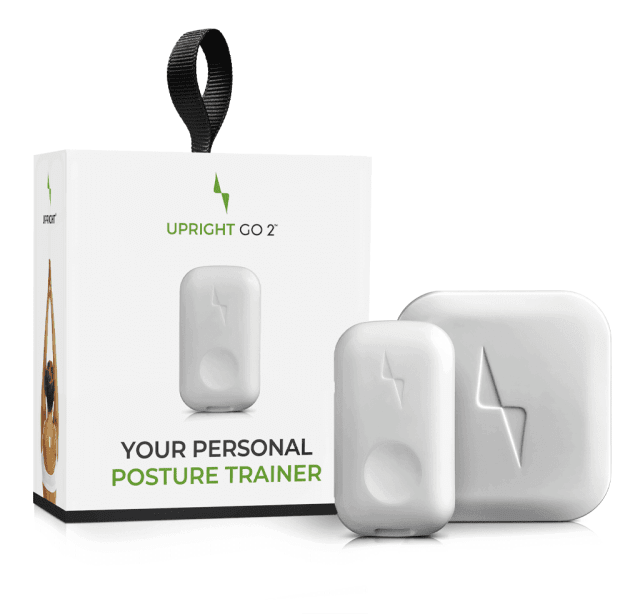Positive Body Language
Upright

You don’t get a second chance at a first impression
Whether we like it or not, first impressions can go a long way in developing a relationship with someone, be it a coworker, a business partner, a job interviewer, or even a first date. Even when you think you’ve nailed the conversation, introduction, or interview, the other person may come away with a negative impression. What gives? Isn’t making a good impression supposed to be easy? It can be, however, most of it simply has to do with using positive body language.
What Is Body Language?
Body language is non-verbal communication through body movements and gestures, facial expressions, eye movement, and posture. Because so much of what we communicate is non-verbal, it is important to make sure that our body-language is positive. Positive body language is when your gestures, movements, posture, and facial expressions are done in such a way that you are viewed as likable, approachable, receptive, and open. Positive body language helps us be approachable and makes others feel at ease when they interact with us. In fact, positive body language is key to making a good first—and lasting impression on others.
Another reason positive body language is so important is that it can help you advance in your career. Practicing positive body language helps you to be more assertive in sharing your opinions and ideas. Others will see your confidence through your body language, and be more likely to favor your ideas in a meeting or discussion. Practice giving a positive impression during meetings by smiling, using eye contact, and leaning forward a little to show you are engaged. These simple actions can go a long way in developing a strong, positive team culture, and lasting relationships. Positive body language also helps to improve the moods of others around you in the workplace, as it can help convey respect and even make it easier to resolve conflict. Face it, everyone is in a happier mood when they feel respected or appreciated.
Body language can work for you
Not only can you use your body language to your advantage, but you can read others’ body language to gauge your audience. By reading body language, you can often detect if someone is telling the truth or not. Some common gestures that may indicate if someone is lying or not include covering their mouth. This is something that is mostly done by children. Other common gestures include touching or scratching the nose, scratching the neck, and touching your ears. These are often involuntarily done and maybe either quick or repeated gestures. Another gesture includes putting fingers in your mouth if you are lying. This is done in an attempt to hide emotions and guilt by looking serious.
Now that we’ve learned the basics of positive body language, here are 10 tips you can put into practice that will help you succeed.
10 ways to use positive body language
- Practice a relaxed posture – You can appear relaxed by keeping your back straight and relaxing your shoulders. This helps show others that you feel comfortable. If you have trouble remembering posture, check out a posture trainer that does the remembering for you, complete with all-day tracking and gentle reminders.
- Take up space – Whether you are standing or sitting, taking up space helps show you are confident. When people feel nervous, they often try and make themselves smaller, so as not to be noticed.
- Lean – When you are speaking with a colleague, friend, or acquaintance, lean in a little to show you are listening to what they are saying.
- Relax your arms – Crossing your arms often shows a closed-off posture. Instead, relax your arms and hang them at your sides.
- Talk with your hands, carefully – Talking with your hands can be a good way to emphasize your points, but too much and it can distract people from what you are actually saying.
- Give firm handshakes. Firm handshakes help show that you are credible, confident, and trustworthy.
- Practice eye contact – Look into people’s eyes when you are talking to them. However, make sure you are not staring.
- Use affirmative movements – Affirmative movements, like nodding your head in a conversation shows that you are listening and engaged. It also helps validate those around you, which helps them feel more positively towards you. At the very least, smiling in response to someone’s comment can be an affirmative movement.
- Talk slowly – Speaking too quickly indicates that you are nervous.
- Take notes – Taking notes shows people that you are listening and that you care about what they are saying. As a bonus, it also helps you better remember what was said and have a reference to return to later on.
On the flip side of things
checking the time when talking to someone, looking at the ground, touching your face too often, picking at something or tapping on things, sitting on the edge of your seat (as if you are ready to leave), are all forms of negative body language that can show the other person that you don’t care about what they are saying. This is important as practicing this type of body language can affect how you impact others.
How positive body language impacts leadership
If you want to be seen as an effective leader, and someone who others trust, you must be seen as credible. First impressions are made in less than 7 seconds. Nonverbal cues (body language) often have the biggest impact on the impression you make on others. Because of this, it is crucial to give off positive cues. One of the most important, and easiest ways you can do this is through your attitude. Most people can detect others’ moods instantly. Before you present in a meeting or discuss something important with a colleague, make a choice about what type of attitude you want to be in, even if you have to ‘fake it ‘til ya make it.’ Having a positive attitude can make people feel more at ease, and if you are in a good mood, positive body language will follow.
Remembering to use positive body language can help you be more successful in job interviews, your overall career, and your relationships with others.
If you want help remembering to practice positive body language, wearing UPRIGHT’s posture training device for just 15 minutes a day can serve as a discreet reminder, and be a catalyst to your success.
You Might also Like
Search
Sign up to our newsletter
Follow Us On
Popular
Revisit the GO 2/S Device Setup
How to get started
Finding your upright position
How to find your target upright posture
Calibration
Check out the UPRIGHT GO 2


